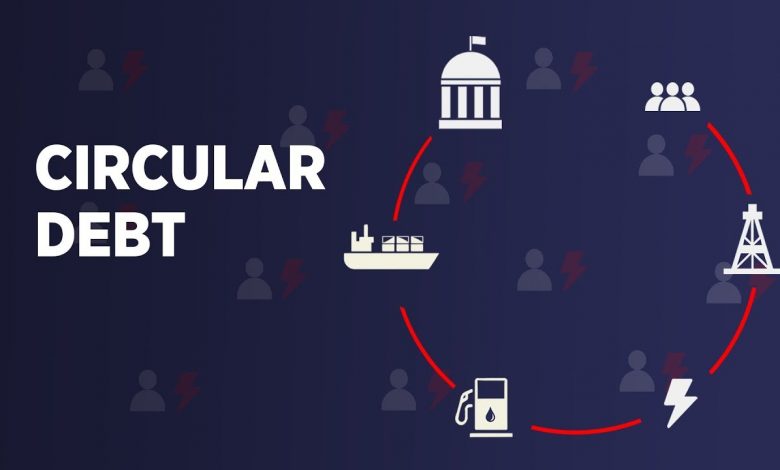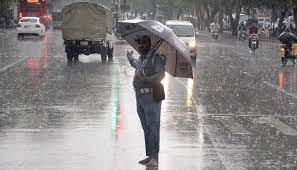Circular debt crisis in Pakistan

Circular debt crisis in Pakistan
Circular debt is one of the major issue faced by the economy of Pakistan. It has affected some of the major industries of Pakistan including PSO, railway and WAPDA. It also has major contribution in the crisis of inflation and unemployment.
“Circular debt” is a shortfall of payments at the Central Power Purchasing Agency (CPPA). CPPA does not receive the outstanding payment from power distribution companies (DISCOs) due to shortfall in receivables by the state-owned distribution companies (DISCOS) and privatized K-Electric (K-El). Thus, CPPA does not make payments to other power companies in the supply chain, that is, state-owned generation companies (GENCOs), Independent Power Producers (IPPs). GENCOs fail to clear their dues to fuel suppliers. Similarly, IPPs, due to delay in payment from the government could not make payment to the fuel suppliers, as a result circular debt created.
The problem of circular debt (power sector deficit) first broke out in 2006 when electricity prices were not allowed to rise in line with a steep rise in international oil prices. Pakistani Rupee also got depreciated significantly in those years.
Year Circular debt(PKR) Year Circular debt(PKR)
2006 111 billion 2015 649 billion
2007 145 billion 2016 589 billion
2008 161 billion 2017 702 billion
2009 236 billion 2018 1152 billion
2010 366 billion 2019 1400 billion
2011 538 billion 2020 2100 billion
2012 872 billion 2021 2306 billion
2013 500 billion 2022 2500 billion
The main reason behind the circular debt and hike in tariff is the expensive and excess unutilized power capacity. The last regime added electricity generation, which is 25pc more expensive than comparable regional benchmarks, and also substantially more than national needs. Yet, at the same time, the last government added generation capacity with a contract of ‘TAKE OR PAY’ basis that has hit the power sector hard. The annual capacity charges that increased to Rs860 billion are now projected to be a whopping Rs1455 billion in 2023.
The government of Pakistan currently has a circular debt of over Rs2.5 trillion which constitutes 6% of Pakistan GDP. Low recovery of monthly bills and high power theft has also given birth to circular debt. Due to theft, circular debt has increased to more than Rs35 million per month which puts pressure on entire system. The primary source of load shedding in Pakistan’s largest metropolis Karachi is the kunda system. . Households in
relatively higher-income brackets report less load shedding than those from low-income areas. Besides electricity theft by individuals and communities, industries are also stealing electricity by tampering with meter readers. Controlling power theft is extremely difficult but not impossible.
Despite frequently raising power prices, the government has been borrowing from banks to make partial payments to power producers to delay a further increase in electricity tariffs.
The most important root cause of the higher cost of electricity is the dependency on imported fuel. The central power purchasing agency allow the companies collect Rs6.0 per unit additional from the power consumers in their electricity bills of April 2022. According to the previous data, this is the highest-ever demand for increase. It will disturb the household budget of millions of families.
Payment to IPPs based on their installed capacity instead of power acquisition and consumption and payment on the return on equity in dollars rather than in Pak rupees. The circular debt has doubled since the dollar rose aggressively last year. Government has renegotiated the terms of agreements with IPPs signed under the Power Policies of 1994 and 2002. As per the details shared by the government; it has succeeded in convincing some IPPs (13 in number) to receive their capacity payment in rupees. Furthermore, it has convinced them to adhere to a take-and-pay mechanism; where the government would pay as per the power acquired and consumed rather than the installed capacity of IPPs. The government is planning to initiate a scheme to decrease the routine of the circular debt by announcing dividends for shareholders of energy sector companies. The government has main stakes in big energy companies and views to help directly if they state dividends.
There is an urgent need to shift focus to renewable energy like solar, wind and local coal. We also need investment in transmission infrastructure. Pakistan has tremendous potential to generate solar and wind power. Expanding renewable energy can make electricity cheaper, achieve greater energy security, reduce carbon emissions, and help Pakistan save up to $5 billion over the next 20 years. Solar and wind power should be urgently expanded to at least 30 percent of Pakistan’s total electricity generation capacity by 2030, equivalent to around 24,000 Megawatts.




